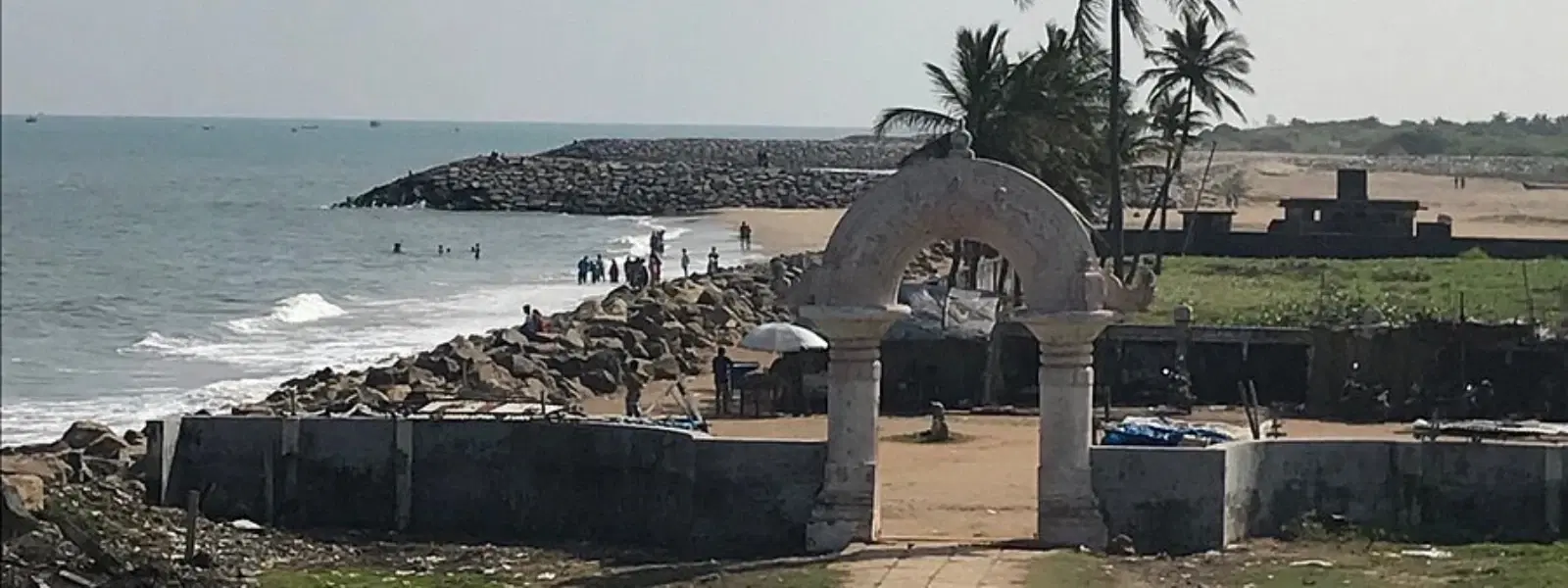
Hotels
•03 min read

There is an undeniable allure to submerged cities that spark the imagination and transport us back to a time when history was alive and pulsating with activity. Poompuhar, an ancient port city in Tamil Nadu, now lies hidden below the waves, waiting to share its secrets. This blog explores 10 fascinating facts about Poompuhar's submerged port through the lens of marine archaeology, ancient Indian maritime history, and groundbreaking archaeological discoveries. Readers will gain unique insights into Tamil Nadu's archaeological heritage, understand the rising importance of underwater heritage sites, and discover how modern techniques are bringing lost cities like Poompuhar back into the light.
Once a bustling trade hub during the Sangam era, Poompuhar was a key node in ancient maritime networks. It played an essential role among South Indian ancient ports, facilitating vibrant trade with Southeast Asia and beyond. The city is deeply etched in Tamil culture, immortalized in classical works like Silappatikaram and Manimekalai, which paint vivid pictures of its thriving commercial and cultural life.
Legend and scientific theory interweave in the story of Poompuhar. Many experts believe that natural disasters such as tsunamis or rising sea levels led to its sudden submersion. Intriguingly, some studies even hint that the city could be over 15,000 years old, adding another layer of mystery to its already compelling history.
Marine archaeology is a specialized field dedicated to uncovering and interpreting underwater cultural heritage. In India, this branch of archaeology has been instrumental in shedding light on submerged cities like Poompuhar. Agencies like the National Institute of Ocean Technology (NIOT) lead the charge, using cutting-edge methods to explore the depths and reveal relics of ancient civilizations.
Recent underwater excavations have unearthed remarkable remnants including fragments of a lighthouse, intricate harbor structures, and pieces of ancient settlements. Explorers have employed advanced technologies such as sonar mapping and underwater photography to accurately document these ruins, providing a detailed glimpse into the sophisticated infrastructure of early maritime trade.
Did You Know? Poompuhar’s submerged ruins include remnants of a massive harbor structure, suggesting it was one of the largest port cities of its time.

The impact of Poompuhar extends far beyond its physical remnants; it lives on in the rich tapestry of Tamil literature. Epics like Silappatikaram celebrate the city as a vibrant and dynamic nexus of trade and culture. These literary works not only document historical facts but also inspire and ignite the imagination about what once was.
Myths and legends contribute to Poompuhar’s mystique. The city is often linked to ancient Tamil kings and revered maritime deities, embodying a fusion of spirituality and history. These stories not only enliven the historical narrative but also serve as a reminder of the cosmic ties that ancient civilizations felt with the sea.
Geological and archaeological studies have attempted to date the relics of Poompuhar, with some findings suggesting an age that may exceed 15,000 years. However, debates persist among historians and scientists, making it one of the most intriguing puzzles in the study of ancient Indian maritime history.
Collaboration is key in the exploration of such vast historical sites. Indian researchers, along with international experts, are pooling their expertise to further investigate Poompuhar. These partnerships are paving the way for future excavation projects that could reveal even more about the city's enigmatic past.
Protecting submerged heritage sites like Poompuhar is critical for preserving our shared global history. Challenges such as environmental degradation and the lack of adequate preservation measures persist, making governmental and community-driven conservation efforts more important than ever.

The legacy of this ancient port continues to influence modern Tamil Nadu. The historical narrative of Poompuhar has inspired cultural exhibitions like the Silappathikara Art Gallery and educational projects aimed at celebrating the region’s rich past. These endeavors not only promote tourism but also deepen the connection between modern society and its historical roots.
Poompuhar is one of the oldest known submerged cities, with some studies suggesting it could be over 15,000 years old, but its exact age remains debated.
Poompuhar is believed to have been submerged due to natural disasters like tsunamis or rising sea levels, as suggested by geological and archaeological studies.
The National Institute of Ocean Technology (NIOT) and other Indian archaeological bodies have conducted extensive underwater excavations at Poompuhar.
Poompuhar, also known as Kaveripoompattinam, is located in Tamil Nadu, near the present-day Nagapattinam district.
Key findings include remnants of a harbor, lighthouse, and ancient settlements, providing valuable insights into the city’s maritime history.
Poompuhar remains a beacon of ancient maritime prowess, its submerged ruins testifying to a sophisticated past rich with trade, culture, and mystery. This exploration into Poompuhar's history, rediscovered through marine archaeology and scientific research, reminds us of the need to protect our underwater heritage sites. For anyone passionate about ancient Indian maritime history, the submerged ruins of Poompuhar offer a captivating glimpse into a vibrant world that still speaks to modern Tamil Nadu. Through continuous research and collaborative efforts, we honor the legacy of this historic port and inspire future generations to explore and conserve these aquatic time capsules.